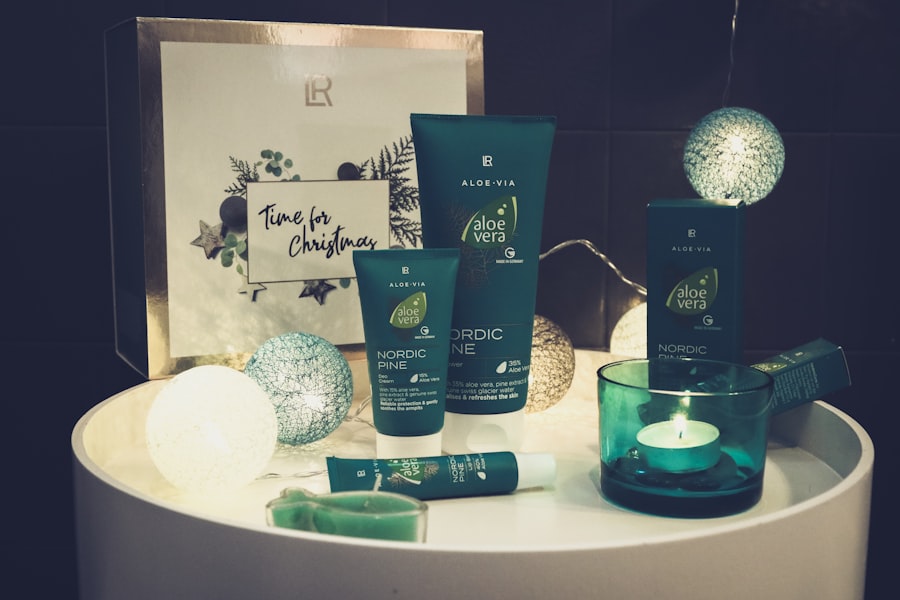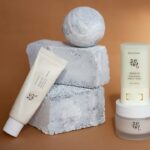When you consider bikini laser hair removal, it’s essential to grasp the fundamental principles behind the procedure. This method utilizes concentrated beams of light to target and destroy hair follicles, effectively reducing hair growth in the bikini area. The laser emits a specific wavelength that is absorbed by the pigment in the hair, which means that the treatment is most effective on individuals with darker hair and lighter skin.
However, advancements in technology have made it possible for people with various skin tones and hair colors to benefit from this treatment. The process typically begins with a consultation where a trained professional assesses your skin type, hair color, and overall suitability for the procedure. During this initial meeting, you can discuss your goals and any concerns you may have.
Once you decide to proceed, the actual treatment involves a series of sessions spaced several weeks apart. Each session lasts anywhere from a few minutes to an hour, depending on the size of the area being treated. You may experience a sensation similar to a rubber band snapping against your skin, but most find it tolerable.
Understanding these aspects can help you feel more prepared and informed as you embark on your journey toward smoother skin.
Key Takeaways
- Bikini laser hair removal targets hair follicles to reduce hair growth in the bikini area
- Shave the treatment area before the appointment and avoid sun exposure and tanning beds
- Apply soothing creams and avoid hot showers to manage discomfort and potential side effects
- Protect the treated area from sun exposure with sunscreen and clothing
- Keep the treated area clean and dry, and avoid tight clothing to prevent irritation
Preparing for your bikini laser hair removal treatment
Preparation is key to ensuring a successful bikini laser hair removal experience. Before your first appointment, it’s crucial to avoid sun exposure for at least two weeks. Tanning, whether from the sun or tanning beds, can increase the risk of complications and reduce the effectiveness of the treatment.
Additionally, you should refrain from waxing or plucking the hair in the bikini area for at least four weeks prior to your session. This is because the laser targets the hair follicle, and removing hair by these methods can disrupt the growth cycle. On the day of your appointment, arrive with clean skin.
This means avoiding lotions, creams, or deodorants in the treated area, as these products can interfere with the laser’s effectiveness.
If you have any concerns or questions about what to expect, don’t hesitate to reach out to your technician beforehand.
Being well-prepared not only enhances your comfort but also maximizes the results of your treatment.
Post-treatment care and precautions
After your bikini laser hair removal session, taking proper care of your skin is vital for optimal healing and results. Initially, you may notice some redness or swelling in the treated area, similar to a mild sunburn. This is a normal reaction and should subside within a few hours to a couple of days.
To soothe any discomfort, applying a cool compress can be beneficial. Additionally, over-the-counter pain relievers like ibuprofen can help alleviate any lingering discomfort. It’s also important to avoid hot baths, saunas, or vigorous exercise for at least 24 hours post-treatment.
These activities can exacerbate irritation and increase the risk of complications. Instead, opt for gentle cleansing with lukewarm water and mild soap. Keeping the area clean and moisturized will aid in recovery and help prevent any potential side effects such as ingrown hairs or infections.
By following these post-treatment guidelines, you can ensure that your skin heals properly and that you achieve the best possible results from your laser hair removal sessions.
Managing discomfort and potential side effects
| Discomfort and Side Effects | Metrics |
|---|---|
| Number of patients experiencing discomfort | 135 |
| Types of side effects reported | nausea, fatigue, headache |
| Percentage of patients requiring intervention | 20% |
While many individuals tolerate bikini laser hair removal well, it’s essential to be aware of potential discomfort and side effects that may arise during or after treatment. As mentioned earlier, some people experience redness and swelling in the treated area. In addition to these common reactions, you might also notice slight changes in skin pigmentation or temporary blistering in rare cases.
Understanding these possibilities can help you manage expectations and prepare for any necessary care. If you do experience discomfort beyond what you consider manageable, it’s crucial to communicate with your technician or healthcare provider. They can provide guidance on how to alleviate symptoms effectively.
For instance, applying aloe vera gel or a soothing lotion can help calm irritated skin. In some cases, they may recommend specific topical treatments to address any adverse reactions. By staying informed and proactive about managing discomfort, you can navigate your bikini laser hair removal journey with greater ease.
Protecting your skin from sun exposure
One of the most critical aspects of post-laser care is protecting your skin from sun exposure. After undergoing bikini laser hair removal, your skin will be more sensitive to UV rays, making it essential to take precautions against sun damage. For at least four weeks following each treatment session, it’s advisable to avoid direct sunlight on the treated area as much as possible.
If you must be outdoors, wearing protective clothing or using an umbrella can provide additional shielding. In addition to physical barriers, applying a broad-spectrum sunscreen with an SPF of 30 or higher is crucial for safeguarding your skin. Look for sunscreens that contain zinc oxide or titanium dioxide for optimal protection against both UVA and UVB rays.
Reapply sunscreen every two hours if you’re spending extended periods outside. By prioritizing sun protection during this sensitive time, you can help ensure that your skin heals properly and maintains its smooth appearance.
Maintaining hygiene in the treated area

Maintaining proper hygiene in the bikini area is essential after undergoing laser hair removal treatments. Keeping the area clean helps prevent infections and promotes healing. After each session, gently cleanse the treated area with mild soap and lukewarm water.
Avoid using harsh scrubs or exfoliants for at least a week post-treatment, as these can irritate sensitive skin. Additionally, wearing breathable cotton underwear can help keep the area dry and comfortable while minimizing friction against freshly treated skin. If you notice any signs of infection—such as increased redness, swelling, or discharge—contact your healthcare provider immediately for advice on how to proceed.
By prioritizing hygiene and being attentive to any changes in your skin’s condition, you can support a smooth recovery process.
Monitoring your progress and scheduling follow-up appointments
As you progress through your bikini laser hair removal journey, monitoring your results is essential for achieving optimal outcomes. After each session, take note of any changes in hair growth patterns or skin texture in the treated area. Many individuals notice a significant reduction in hair density after just a few treatments; however, results can vary based on individual factors such as hair type and hormonal influences.
Scheduling follow-up appointments is equally important for maintaining progress. Your technician will typically recommend a series of sessions spaced several weeks apart to target hair during its active growth phase effectively. Adhering to this schedule will maximize your results and ensure that you achieve smooth skin in the long run.
If you have any concerns about your progress or experience unexpected changes, don’t hesitate to reach out to your provider for guidance.
Long-term maintenance and touch-up treatments
Once you’ve completed your initial series of bikini laser hair removal sessions, it’s essential to consider long-term maintenance and touch-up treatments. While many individuals enjoy lasting results after their initial treatments, some may require occasional touch-ups to maintain smoothness over time. Factors such as hormonal changes or new hair growth cycles can influence how often these touch-ups are needed.
Typically, touch-up sessions are recommended once every six months to a year after completing your initial treatment plan. During these appointments, your technician will assess your needs and determine if additional sessions are necessary based on your individual hair growth patterns. By committing to long-term maintenance, you can enjoy the benefits of smooth skin without the hassle of regular shaving or waxing.
In conclusion, bikini laser hair removal offers an effective solution for those seeking long-lasting hair reduction in a sensitive area. By understanding the process, preparing adequately for treatments, and following post-care guidelines diligently, you can achieve optimal results while minimizing discomfort and side effects. Remember that ongoing communication with your provider is key throughout this journey—whether it’s monitoring progress or scheduling touch-ups—to ensure that you maintain beautiful results for years to come.
After undergoing bikini laser hair removal, it is crucial to follow proper aftercare instructions to ensure optimal results and minimize any potential side effects. One helpful resource for learning more about post-treatment care is the article on Fashion Home. This article provides valuable tips and guidelines for taking care of your skin after laser hair removal, including avoiding sun exposure, moisturizing regularly, and avoiding harsh chemicals. By following these recommendations, you can help maintain smooth, hair-free skin in your bikini area for longer periods of time.
FAQs
What is bikini laser hair removal aftercare?
Bikini laser hair removal aftercare refers to the steps and precautions that should be taken after undergoing a bikini laser hair removal treatment to ensure proper healing and optimal results.
What are the common aftercare instructions for bikini laser hair removal?
Common aftercare instructions for bikini laser hair removal may include avoiding sun exposure, wearing loose clothing, avoiding hot baths and showers, applying soothing creams or aloe vera gel, and avoiding excessive sweating or friction in the treated area.
How long does it take for the skin to heal after bikini laser hair removal?
The healing time after bikini laser hair removal can vary from person to person, but typically the skin may take a few days to a week to fully heal. It is important to follow the aftercare instructions provided by the laser hair removal technician to ensure proper healing.
Are there any potential risks or side effects associated with bikini laser hair removal aftercare?
While bikini laser hair removal is generally considered safe, there are potential risks and side effects associated with the treatment and aftercare. These may include redness, swelling, itching, and in rare cases, blistering or changes in skin pigmentation. It is important to follow the aftercare instructions to minimize these risks.
Can I shave or wax the treated area after bikini laser hair removal?
It is generally recommended to avoid shaving or waxing the treated area after bikini laser hair removal, as this can irritate the skin and interfere with the healing process. It is best to consult with the laser hair removal technician for specific guidelines on hair removal methods post-treatment.






